Mint Family: Kitchen Garden Herbalism (Are you growing any mint family members?)
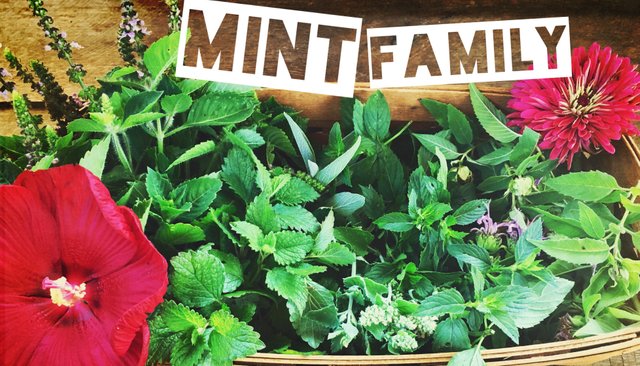
Lamiaceae, Mint Family
Surely this family is one of the most widespread and used plant families by humans.
balm one definition of which is “a soothing restorative energy”
sage, harkening to wisdom
We get this feeling that there is a lot more to this family in the healing department than is commonly granted to it in our common knowledge!
This morning I woke up inspired to gather some herbs. I had this decision to make as I started boiling water for tea- which type of tea will I make?
Yesterday I had coffee, and yerba mate is almost a daily staple around here. While I do love caffeine, the "pause" of the drinking culture, the “ups” and especially the smell of coffee, I know that it jolts my body, and if I drink too much, it even elicits anxiety and sometimes an emotional “break down” feeling or a big drop after the initial buzz softens. For that reason, I don’t like to make a habit of needing caffeine daily.
My body was more craving the gentle, yet effective, restorative powers of herbs today.
When I say gentle I nearly feel I need to put a caveat next to that! I think that’s because it plays into the idea that herbs are mildly effective or even ineffective in today’s culture of energy shots and “magic pill” pharmaceuticals. The way I see it is that our herbal friends aren’t lacking in strength, but our orientation to them is off.
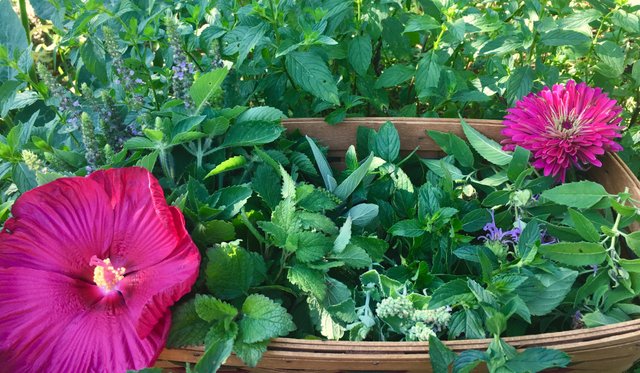
A tea bag that you can buy at most stores is usually just that a tea bag made for 1 cup of tea.
Not to mention tea bags are often fileld with old or inferior herbs. When working with herbs for healing usually 2-3 cups of tea a day taken over a longer period of time is what is called for. Herbs in the mint family wont “knock ya out” and they wont be a one-stop quick fix (most herbal medicine isn’t), so it really takes a paradigm shift as we’re working with them.
Also, the modern tea-bag-steeping-1-cup culture also gives herbs a “mild rep”. Most herbs need to be steeped in an infusion which usually just means pouring just-boiled water over herbs, putting a lid on it (to keep in as many of the volatile oils as possible) and letting it sit for 20 minutes to 8 hours. Depending on whether you’re using bark, roots, stems, you also can simmer it up which is known as a decoction. But today, and for most of the Mint Family, we’re using the leaves of the plant which are more effective if infused.
Other members of the Mint Family are not only used for teas, but also as some of our most popular culinary spices! Oregano, rosemary, thyme, basil, lavender, marjoram, savory, etc!
For more on botanical families, check out @ofsedgeandsalt's great post on basic Family classifications- you may be surprised on how easy it gets to ID stuff once you get to know the families!
This morning I went around the homestead and collected a sampling of herbs for tea and as I started thinking about it, I realized they were all in the Mint Family!! (that’s what inspired this post)
Monarda fistulosa aka Bee Balm, Wild Bergamot, Oswego Tea
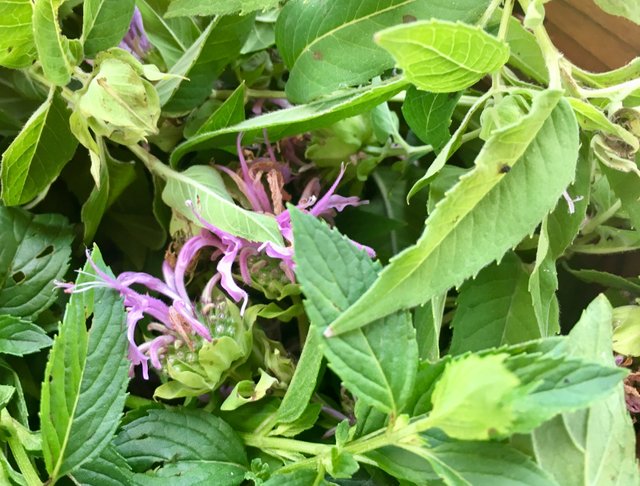
Chocolate Mint, a type of peppermint
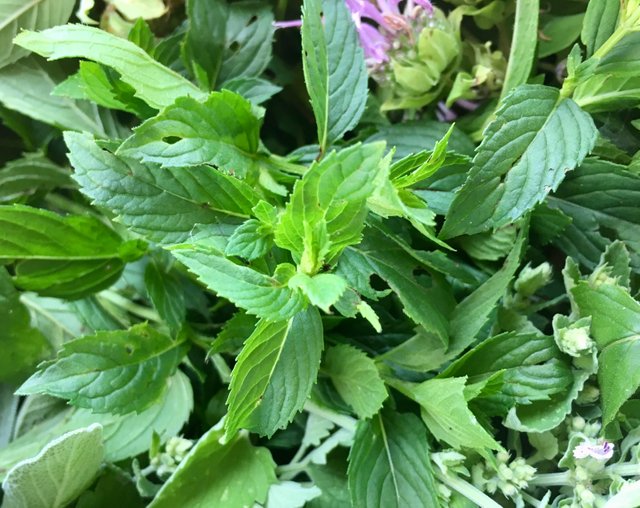
Catnip
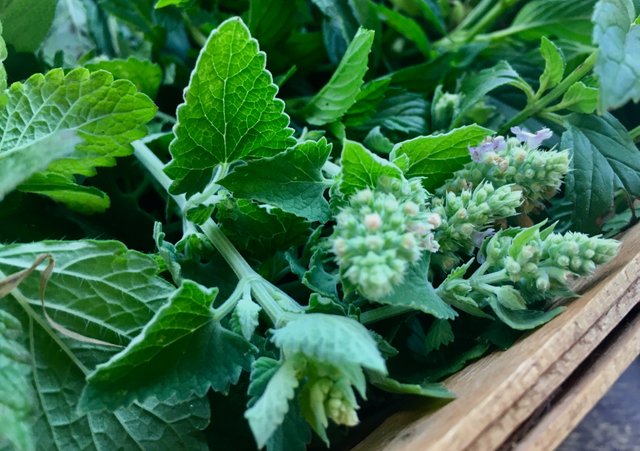
Tulsi or Holy Basil
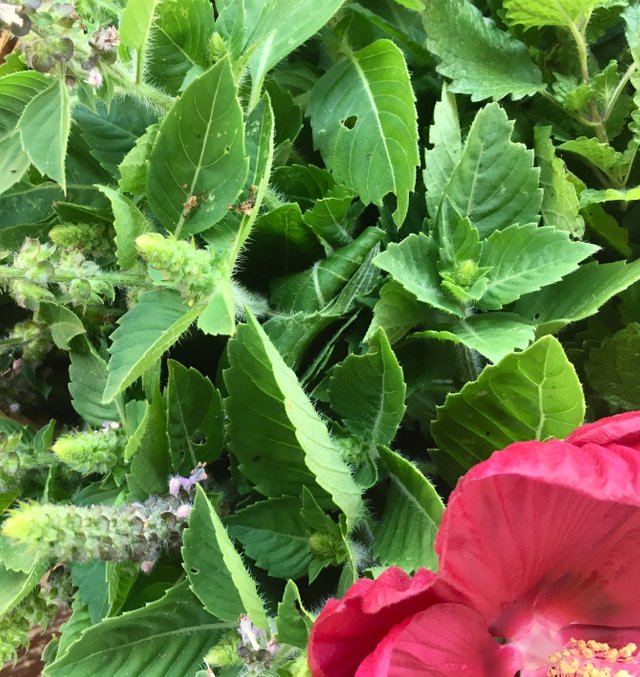
Sage
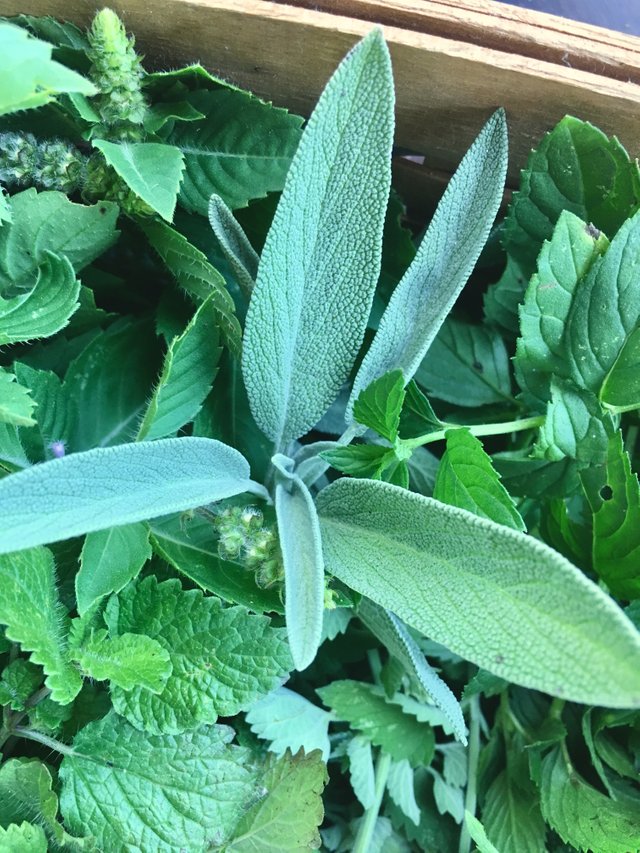
Lemon Balm
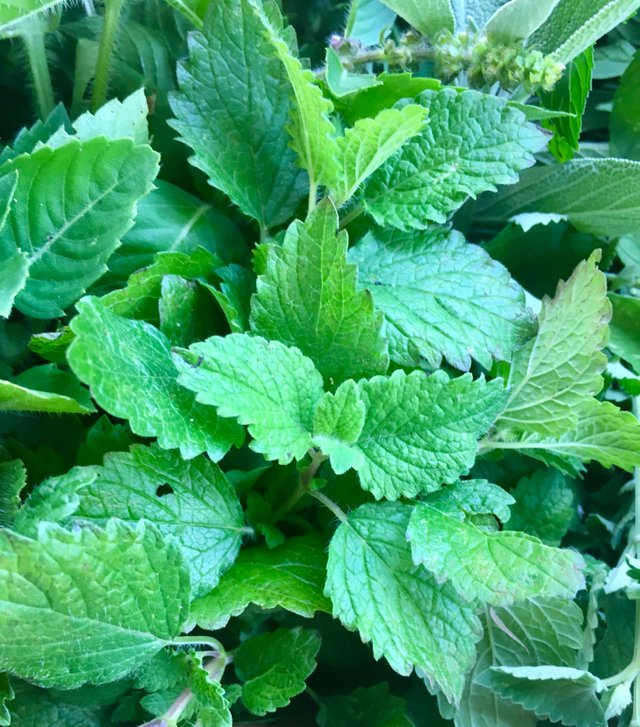
Mints, as mentioned above, have volatile oils.
These warm the body and encourage sweating (they can also break fevers). Inside the body, this has the effect of opening up the blood vessels to facilitate circulation (useful in hypertension and for stimulating delayed menstruation.) Mints also settle the stomach and each of the plants listed above has varying properties that I wont go into, but that are unique to them.
One really neat thing about this family is that is contains no poisonous members and is fairy easy to ID.
If you find a plant with characteristic square stems, opposite branching structure and simple leaves you may be looking at a member of the mint family. The aromatic nature of the leaves may certainly confirm this. The sultry and often delicious flowers (reminiscent of labia from whence the name originates) may add intrigue to the observer. You’ll soon get to know many members of this broad family which includes 180 genera and 3,500 species.
Another great aspect of this family is in respect to their volatile oils. Many sources claim that the strong smells can confuse many pests, and may help protect other plants. This is why we plant members of this family under many of our fruit trees. They add complexity and therefore resiliency to any ecosystem.
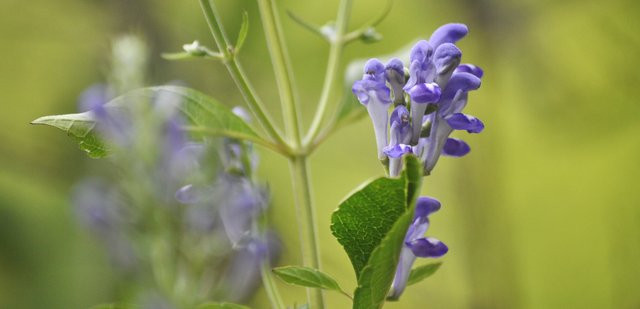
after I made tea, I felt I should check on our native Skullcap species. It’s flowering! This is also in the mint family. Article on it coming soon! 😍
The Lamiacea (formerly Labiatae) is a great introduction for the budding herbalist and/or amateur botanist. From being easy to ID, a joy to grow, medicinally rich and downright delicious, this family is one to include in your garden, medicine practice and wild crafting forays.
Hope this has been helpful and inspiring to ya’ll we’re both blessed to have so many types of mints on the homestead.

Very good content, it is amazing there you have several species of mint in one place, I was taking mint tea they recommended it once to whet my appetite and it worked for me, thanks for sharing
thank you! glad to hear about you using it to "whet your appetite" (love that phrase :)) -- a very traditional use! <3
Education :) great post. photos and description of mint family are very helpful for those of us that are not as knowledgeable as you yet
awesome to hear! thanks for the feedback. you may also be interested in @ofsedgeandsalt's post on plant families! https://steemit.com/homesteading/@ofsedgeandsalt/botany-basics-for-gardeners-and-nomads
At the moment, we've got some mint (which I recently dug out from under piles of blackberry vines-- ouch!), quite a bit of sage and a HUGE harvest of lavender. Love this time of the year when things start to approach harvest time!
Mmmmm huge harvest of lavender sounds divine! do you dry it or do anything with it? that is one thing i don't have yet on the homestead and definitely will prioritize for next yr!! love harvest time around here too- tho it's been so so dry many things are suffering. glad to hear from you, mint rescuer!
great read! I enjoyed learning about the mint family. I am really inspired to go out and plant herb gardens out in my fruit tree orchard to deter some of the pests we have. We don't spray at our orchard so, in particular the Japanese beetles have just a bout destroyed my plum trees this year. Thanks for the inspiration!
thank you! glad you enjoyed learning a bit and inspired to companion plant some! happy to share the inspiration :)
the japanese beetles are devastating many of our plants too!! trying diatomaceous earth sprinkled on their leaves to see if that helps- so far it does seem to be helping some.
So beautiful, I think I could smell them through the screen lol. And those flowers...oh my goodness, unbelievable! ox
hehe :) yes they are quite fragrant! <3 the skullcap flowers are so amazing!!! <3
Friend i like your choice to gardening minits plants .Mint is very useful in our daily life & control so many diseases, i have already a mint plant in my small garden.
thank you. they're certainly an awesome family of plants that many all around the world are familiar with/growing. happy to hear you have a plant :)
lovely article and thanks for the shoutout!
oh i miss the days of endless fresh tulsi.... sigh.
thank you :) you're welcome
yes! it's a blessing for sure ~
traditional Organic farming under the the Demeter method uses mint and onions to work against bugs. Rats hate the smell and while I love ratties i do not want them infesting my home so i often use the oil to create barriers they will then avoid , if you smear it around your windows and doors in an unbroken line ants wont come in either ...
smart tip! thanks for sharing :)
:)
Lovely and deeply informative post! I could almost smell the herbs as I read it! Mint tea is one of my favourites and I had no idea sage was in the mint family. I can only hope that we are surrounded by as many mints as you are some day. Really lovely.
<3 :) thanks dear. i'm sure you'll be surrounded by so many mints in no time flat! i think you're well on your way. i, for one, don't have lavender here yet and definitely need some!! xo
Great post. I grow chocolate mint, lemon balm, Thai basil and Italian basil, sage, thyme, rosemary, lavender and oregano (plus a lot more!). I use them all the time for herbal teas. My favorite nighttime tea is chamomile and lemon balm. I just fill the mug half way with the fresh herbs and then make the tea. It is such a relaxing blend. Thanks for sharing this information!
awesome to hear it @chefsteve!! love to hear the variety of mint family plants you're growing and that you make a night time tea with them :) yes!! chamomile and lemon balm, such a classic :)